
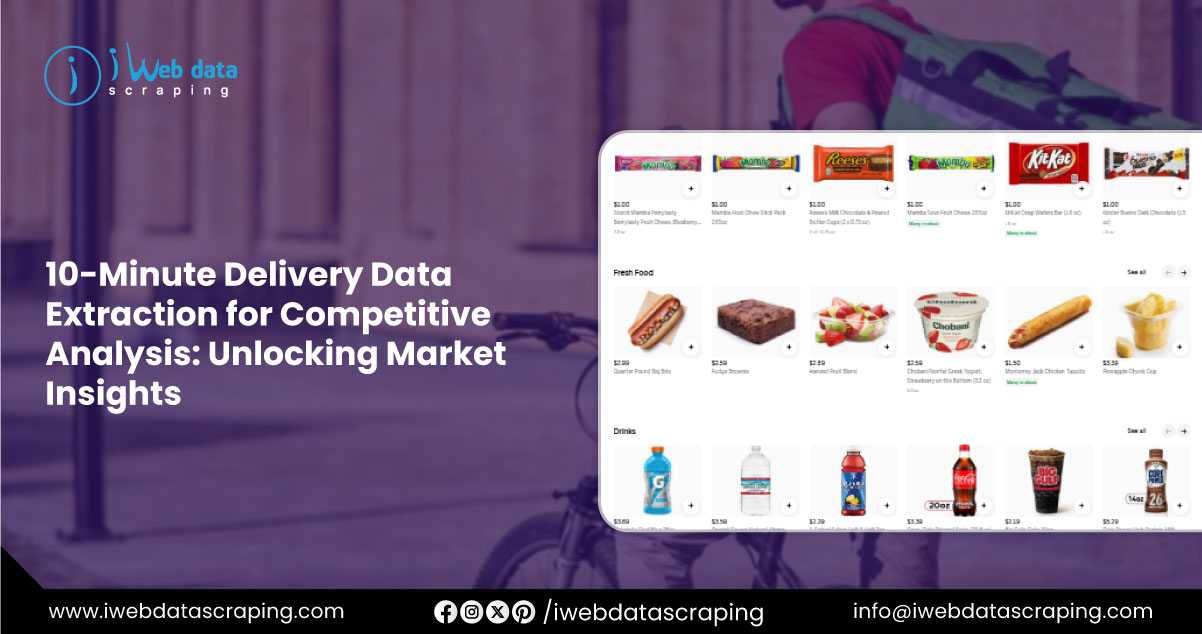
In today's fast-paced digital economy, 10-minute quick commerce delivery has transformed e-commerce and retail. Companies like BlinkIt, Zepto, and Gorillas are redefining consumer expectations with ultra-fast grocery and essentials delivery. To stay competitive, businesses must leverage 10-Minute Delivery Data Extraction for Competitive Analysis to gain insights into pricing, delivery efficiency, and customer behavior.
Using Web Scraping Instant Delivery Services Data, companies can monitor real-time market shifts, optimize pricing, and enhance logistics. This data-driven approach helps retailers improve customer satisfaction, streamline supply chains, and maintain a competitive edge. Additionally, Extracting Quick Commerce Pricing & Delivery Trends is vital for analyzing delivery speed, product availability, and regional pricing. Competitive intelligence from data scraping enables businesses to make informed decisions, adapt to market demands, and maximize efficiency.
This report explores real-time quick commerce data extraction methodologies, the rising demand for instant deliveries, and key strategies businesses implement. We also provide data-driven insights and competitive analysis to help companies navigate the evolving quick commerce ecosystem.
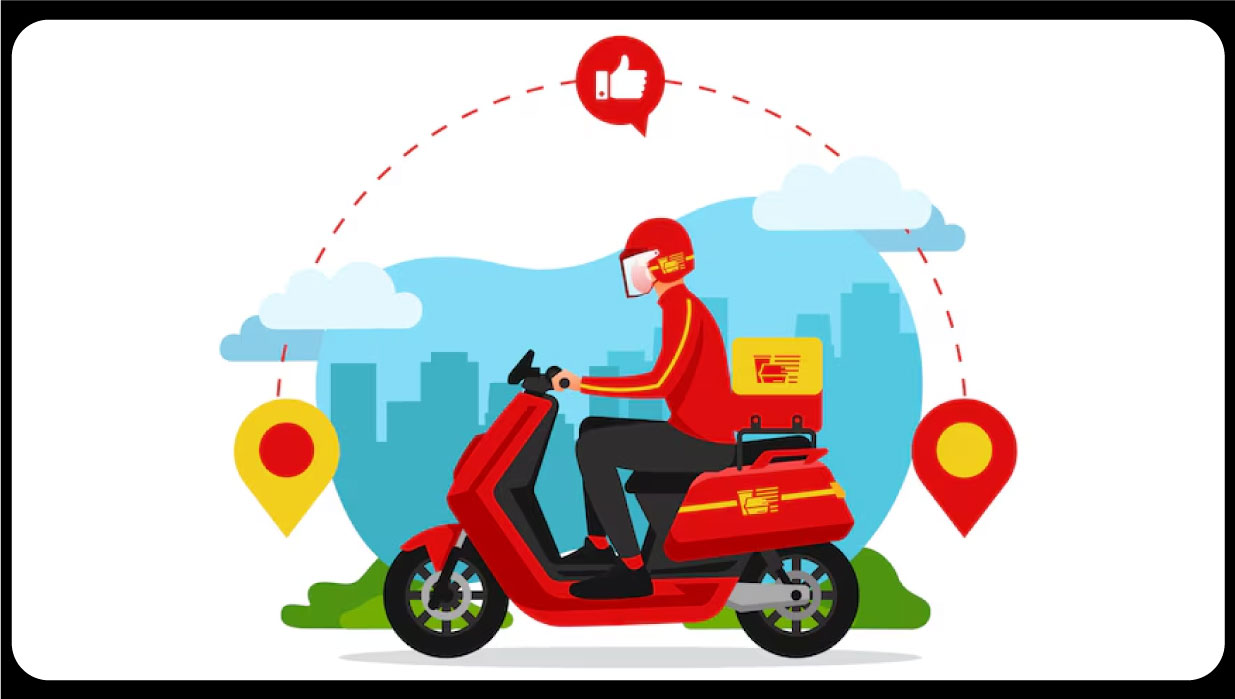
The demand for instant delivery services has surged dramatically, driven by evolving consumer preferences, rapid urbanization, and continuous advancements in logistics technology. Today's consumers expect groceries, personal care products, and household essentials to be delivered within minutes rather than hours or days. To remain competitive in this fast-paced industry, businesses must Scrape Market Data for Fast Deliveries to gain actionable insights into market trends, delivery performance, and consumer behavior.
Several key factors have fueled this rapid growth in quick commerce:
1. Urban Density: High population density in metropolitan areas creates an ideal environment for efficient last-mile delivery operations. With strategically placed micro-fulfillment centers, companies can reduce transit times and ensure ultra-fast deliveries.
2. Consumer Expectations: Millennials and Gen Z prioritize speed and convenience over cost, making instant delivery services a preferred choice. The increasing reliance on quick commerce platforms underscores the need for businesses to focus on Extracting Trends in Quick Commerce to understand shifting purchasing patterns and tailor their offerings accordingly.
3. Technology Advancements: Integrating AI-powered routing, real-time tracking, and automated order fulfillment has significantly improved delivery efficiency. Innovations such as predictive analytics and drone-based deliveries are further reshaping the industry.
4. Venture Capital Investments: The quick commerce sector has attracted massive funding from venture capitalists, allowing companies to scale their operations, enhance technology infrastructure, and expand their reach.
As competition among quick commerce platforms intensifies, businesses must utilize Quick Commerce Data Scraping Services to extract and analyze real-time data. This approach enables them to track pricing fluctuations, evaluate operational efficiencies, and identify emerging market opportunities. By leveraging data-driven strategies, companies can optimize their supply chain, enhance customer satisfaction, and maintain a strong competitive position in the evolving quick commerce ecosystem.
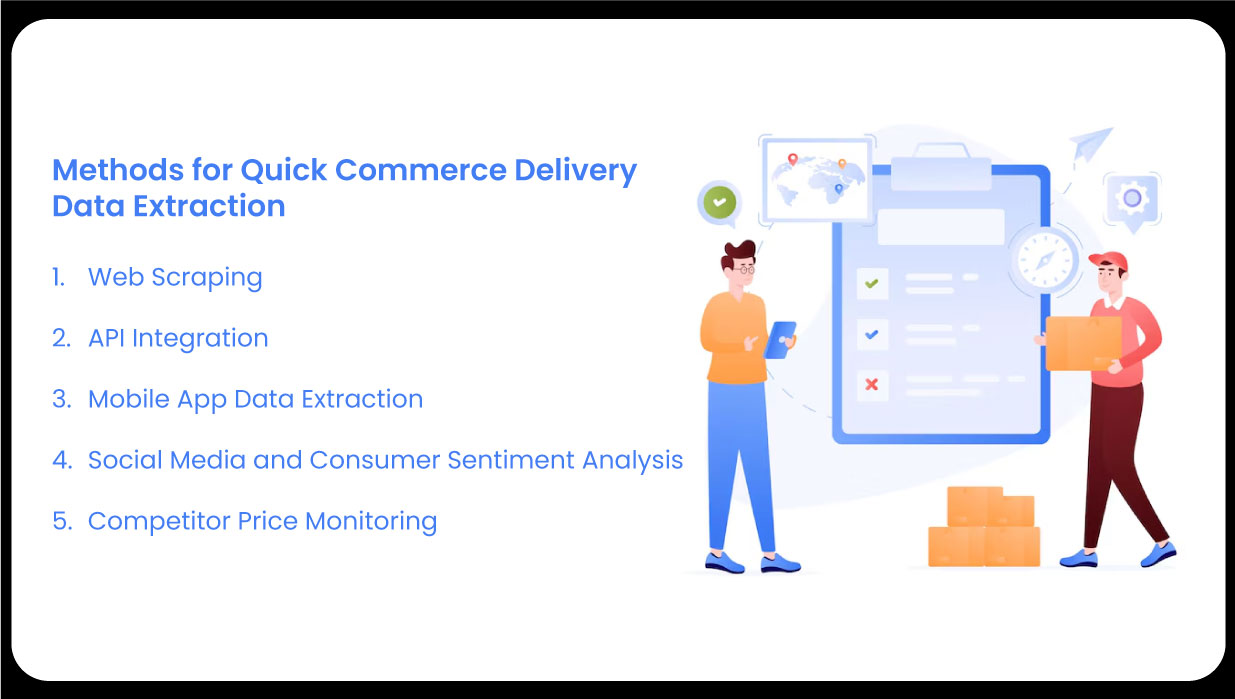
To perform a practical competitive analysis, businesses employ multiple data extraction techniques. The following methods enable companies to gather real-time insights from quick commerce platforms:
1. Web Scraping
2. API Integration
3. Mobile App Data Extraction
4. Social Media and Consumer Sentiment Analysis
5. Competitor Price Monitoring
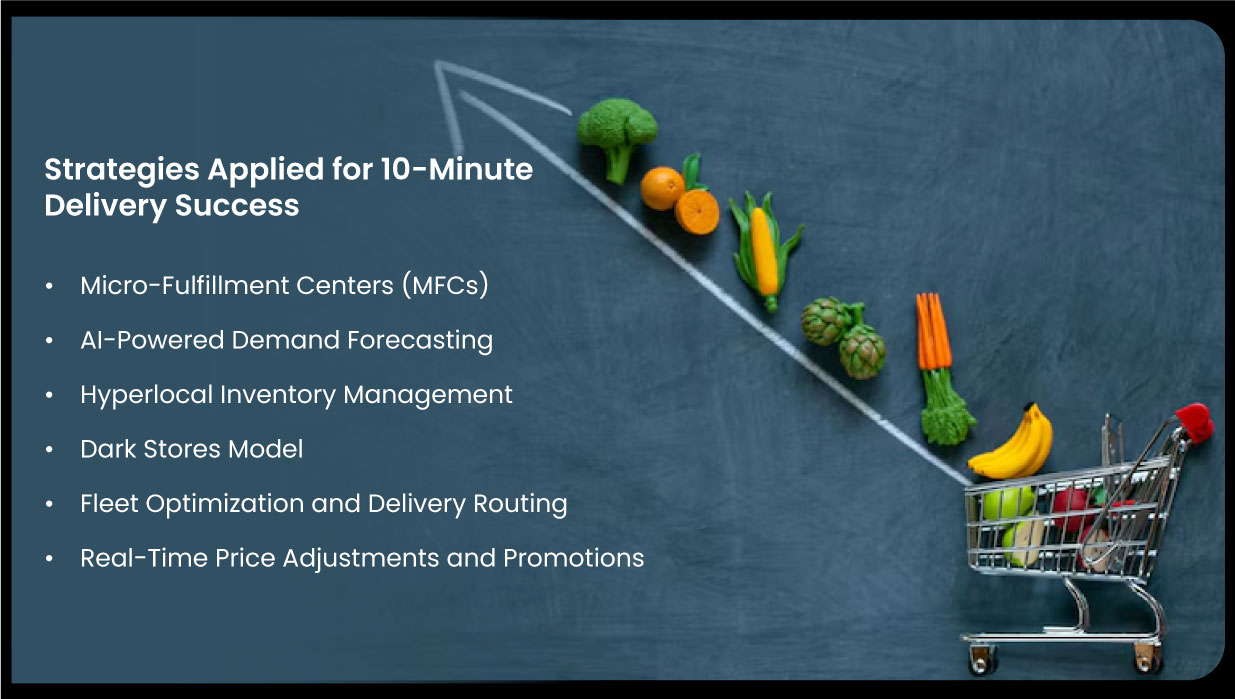
Quick commerce companies deploy multiple operational and technological strategies to ensure deliveries are completed within 10 minutes. These include:
Micro-Fulfillment Centers (MFCs)
AI-Powered Demand Forecasting
Hyperlocal Inventory Management
Dark Stores Model
Fleet Optimization and Delivery Routing
Real-Time Price Adjustments and Promotions
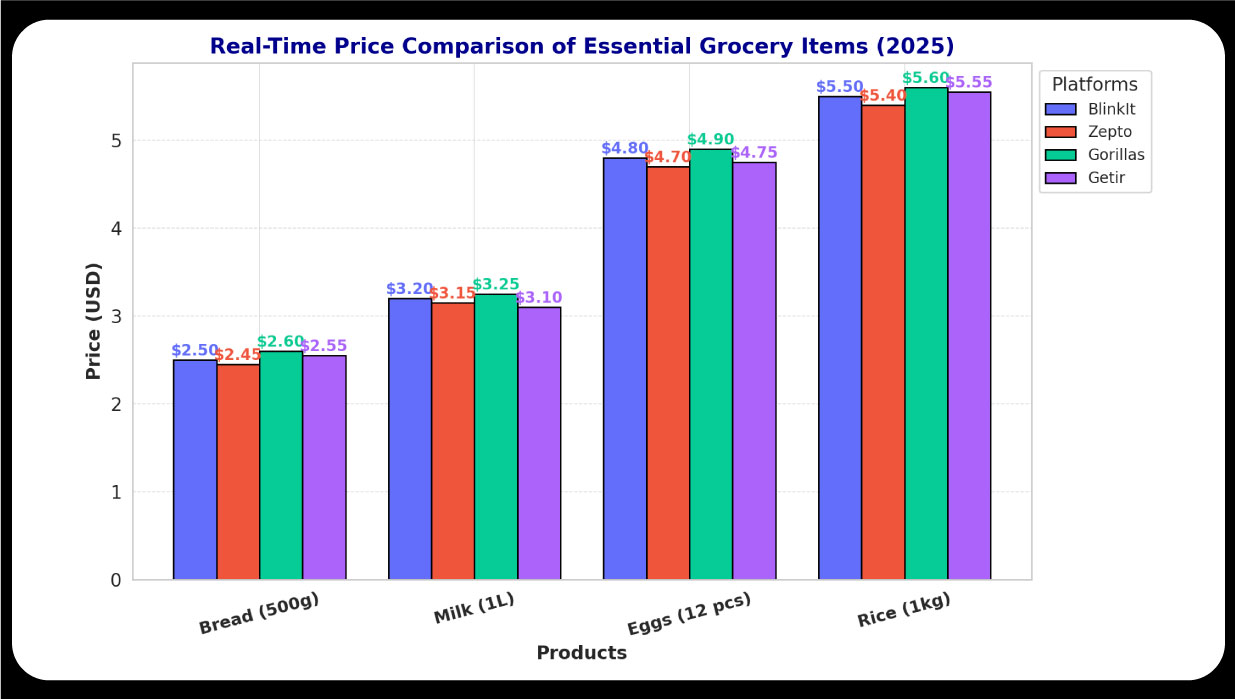
Businesses can gain valuable insights to refine their quick commerce strategies by leveraging data extraction methods. Extracted data enables companies to analyze pricing, delivery speed, and customer preferences, helping them stay competitive. Quick Commerce Datasets comprehensively view market trends, operational efficiencies, and demand patterns across various platforms. A detailed comparative analysis of leading quick commerce services helps identify strengths, weaknesses, and areas for optimization. Utilizing Quick Commerce Data Intelligence, businesses can make data-driven decisions, enhance logistics, and improve customer satisfaction. This approach ensures they remain agile in the rapidly evolving instant delivery market.
Table 1: Comparison of Leading 10-Minute Quick Commerce Platforms (2025)
| Platform | Average Delivery Time | Number of Cities Operated | SKU Count | API Availability |
|---|---|---|---|---|
| BlinkIt | 9.5 minutes | 20+ | 3,500+ | Yes |
| Zepto | 9 minutes | 15+ | 4,000+ | No |
| Gorillas | 10 minutes | 18+ | 2,800+ | Yes |
| Getir | 9.8 minutes | 12+ | 3,200+ | No |
The above data helps businesses evaluate competition and identify areas for operational improvements.
Table 2: Real-Time Price Comparison of Essential Grocery Items (2025)
| Product | BlinkIt Price | Zepto Price | Gorillas Price | Getir Price |
|---|---|---|---|---|
| Bread (500g) | $2.50 | $2.45 | $2.60 | $2.55 |
| Milk (1L) | $3.20 | $3.15 | $3.25 | $3.10 |
| Eggs (12 pcs) | $4.80 | $4.70 | $4.90 | $4.75 |
| Rice (1kg) | $5.50 | $5.40 | $5.60 | $5.55 |
Businesses can optimize their pricing models by extracting and comparing real-time pricing data to stay competitive.
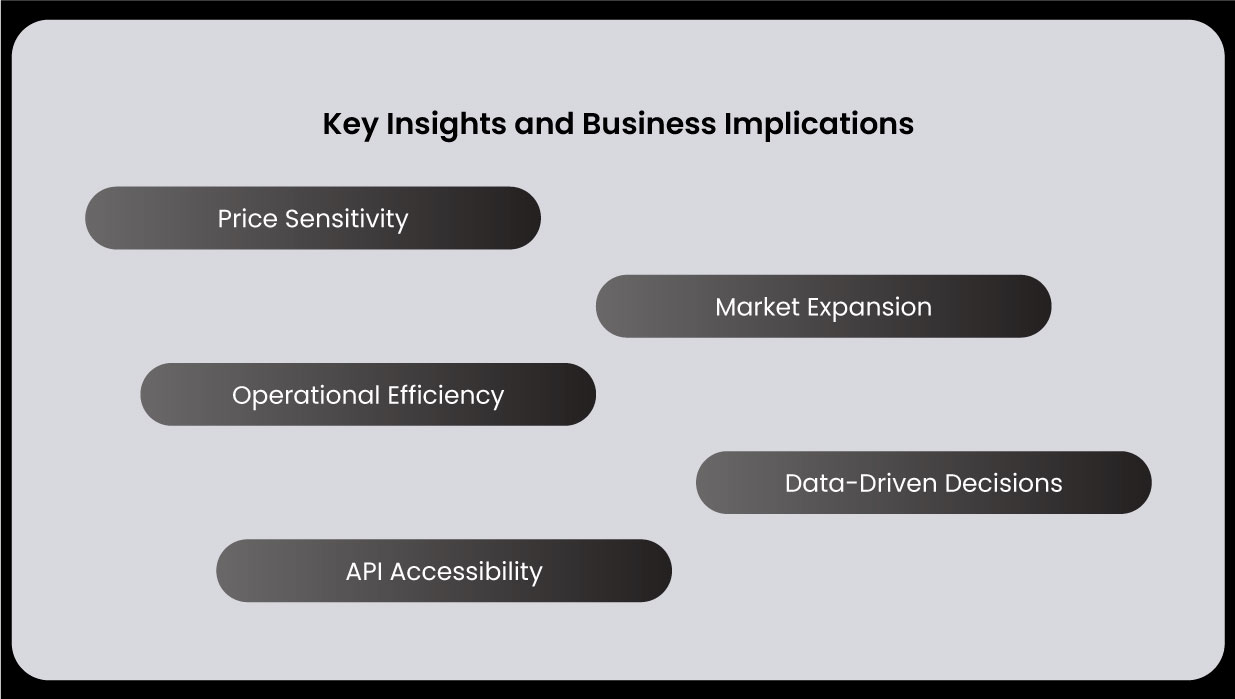
Price Sensitivity: Competitive pricing is a crucial differentiator in the quick commerce sector. Consumers tend to prefer platforms with minor cost advantages.
Market Expansion: Quick commerce players are covering more cities, highlighting an increasing geographic footprint.
Operational Efficiency: AI-driven logistics and fleet optimization strategies significantly reduce delivery times.
Data-Driven Decisions: Data-Driven Decisions that leverage real-time data extraction gain a strategic edge in dynamic pricing, inventory planning, and demand forecasting.
API Accessibility: Companies with open APIs enable better third-party integrations, offering a technological advantage.
The rapid growth of 10-minute quick commerce delivery is reshaping the future of e-commerce and grocery retail. Extracting real-time data from these platforms gives businesses essential insights into competitor pricing, delivery efficiency, and inventory strategies. Using web scraping, API integration, and mobile app data analysis, companies can develop data-driven strategies to optimize their operations and maintain a competitive edge in the market.
As the industry continues to evolve, businesses that harness real-time competitive intelligence will lead in delivering superior customer experiences and market innovations. Data extraction and analytics will be central to shaping the next phase of quick commerce.
Experience top-notch web scraping service and mobile app scraping solutions with iWeb Data Scraping. Our skilled team excels in extracting various data sets, including retail store locations and beyond. Connect with us today to learn how our customized services can address your unique project needs, delivering the highest efficiency and dependability for all your data requirements.